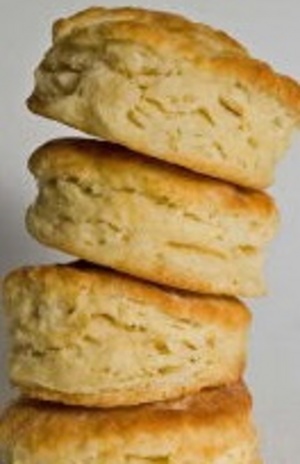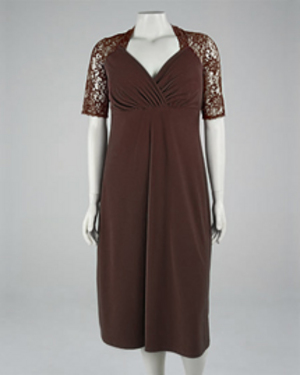I love to cook and share recipes. A question I’m often asked is, “How do you make homemade bread?” My husband loves homemade bread, particularly biscuits, and thinks a meal isn’t a meal without bread; bread is the main dish. So in my efforts to make the bread that is good enough to make him open his mouth and say the words, “This bread is better than Mom’s,” I’ve tried many recipes and bread-making techniques over the years. And I’ve learned a lot about how to make great bread. So I have all kinds of advice and tips and little tricks to share with you that will help you learn to make wonderful, delicious breads for your family. But don’t expect hubby to say it’s better than moms. He won’t. Even if it is, he won’t. I gave up on that a long time ago! But I can guarantee he’ll be mighty pleased!
Today we’re going to talk about how to make delicious homemade biscuits, and I’ll pass along to you all the biscuit-making tricks I’ve learned over the years.
I’m using the Biscuits Supreme recipe, breaking it up as I go. Click on the link to see it in recipe format without the tips. The procedure is the same for any biscuit recipe you use.
Ingredients:
2 cups all-purpose flour – Don’t buy the cheapest flour you can find. Cheap usually means rough and clumpy. Even sifting won’t help this flour. Buy a good brand of flour. The better brands of flour are finer grained and will run like silk through your fingers. This will make a huge difference in the way your biscuits turn out.
4 teaspoons baking powder – Rumford or Clabber Girl makes a better tasting biscuit.
2 teaspoons sugar
½ teaspoon cream of tartar
½ teaspoon salt
½ cup shortening
2/3 cups milk
Procedure:
Before you begin, lightly flour your baking pan and set it aside. Some pans require a light greasing or spraying with cooking spray. (You know your pans.) Preheat your oven to 450°F.
Place all the dry ingredients – flour, baking powder, sugar, cream of tartar, and salt – in a large bowl. You can either sift the dry ingredients together with a sifter, or you can use a wire whisk to mix them. I use a whisk, and mix the dry ingredients until I feel they are thoroughly mixed. It’s just a little quicker and easier than sifting, but some bakers wouldn’t dream of making biscuits without sifting, so it’s up to you which technique you use.
Add the fat. Your biscuits will be better if the fat you use is cold. I think lard makes the very best tasting biscuits, but as lard may not be the healthiest choice, you can use shortening. I sometimes use part shortening and part bacon grease, or part shortening and part butter. Cut the shortening into the flour – I use a fork for this, but you can also use a pastry blender or two knives, or you can use your hands – just keep cutting in the shortening and mixing until the mixture looks like coarse crumbs.
Add the milk all at once and mix until everything just sticks together. The less you mix, the lighter and fluffier your biscuits will be. In this step, you can judge whether your dough may be a little dry, and if it is, add a dab more milk. If it’s a little sticky, that’s fine. It’s easier to add in a little flour to make a dough drier than it is to stir more milk into stiff dough.
I use my countertop to make biscuits. Thoroughly clean and dry the surface before rolling out your biscuit dough. You can use any flat surface in the kitchen, such as a table, and some people have a pastry sheet or some other specially made item to roll their dough on.
Lightly flour the surface. Spread flour on an area large enough to accommodate your rolled-out dough.
Turn your dough out of the bowl onto the countertop or table. Generously flour your hands. I keep a bowl of flour nearby to dip into as often as I need, to flour my hands, add flour to the countertop, or sprinkle onto my dough if needed.
With floured hands, gently lift the dough, pulling it inwards to begin kneading. Flour your hands as needed to keep them dry, and knead the dough about 10 strokes. To knead, you flatten the ball of dough out just a bit with the heels of your hands, gently grasp the far edge of the dough and fold it in half by pulling it over towards you. With the heel of your hand, push the dough down into itself. Turn it a quarter-way around and knead again. Do this about ten times, all the while keeping your hands dry with flour. You can tell if you need to re-flour your hands if the dough begins sticking to them. Don’t over-knead! Again, the less you handle your dough, the lighter and fluffier your biscuits will be.
When you’re done kneading, pat the dough to flatten it a little. Then roll it out evenly in all directions until it’s about ½-inch thick. Not everyone is equipped with a rolling pin, especially if they don’t make biscuits or pie crusts very often. If you don’t have a rolling pin, you can actually roll your dough out with a smooth drinking glass or a 2½-inch cookie cutter. For a glass, using your hands, spread a little flour all around the glass and lay it on its side on the dough to roll. If the dough starts sticking, add more flour onto the glass.
When you’ve rolled out your dough, it’s time to cut the biscuits. You can use a biscuit cutter, or – you can just flip that make-shift rolling pin-glass upside down and cut your biscuits with the top of the glass. As with everything else, dip the top of the glass (or your biscuit cutter) in a little flour to keep it from sticking.
I know I’ve stressed keeping everything floured, but remember – lightly floured! If you use too much flour on everything, your biscuits could turn out to be too dry. Cut each biscuit with one straight-down cut. If you twist or turn your cutter, your biscuits will bake unevenly shaped. If you want perfectly round beautiful biscuits, cut each in one stroke. I want to say here, my mother-in-law doesn’t roll out and cut her biscuits. Once she gets the dough mixed, she patties out the biscuits like you would make hamburger patties (with floured hands) and lays them on the pan as she goes. This is a great way to get done quicker if you’re in a hurry or just don’t want the mess to clean up. The biscuits aren’t as “pretty” pattied out, but they still taste just as good!
Lay the biscuits on your lightly greased or sprayed pan, leaving about an inch of space between the biscuits.
Don’t waste your left-over dough after cutting. Roll it into a ball, roll it out, and cut more biscuits. When I’m down to just a little wad of dough left, I patty that last biscuit out with my hands.
Bake at 450°F on the top rack of your oven for 10 to 12 minutes or until golden brown.
This recipe will make about 10 biscuits. When I need more, I double the recipe, and then split the dough into two balls. I roll out and cut one ball and then roll out and cut the other ball. If you have a surface large enough, it won’t be necessary to split the dough.
Here’s an idea you might like to use. It does take time to make delicious homemade biscuits, and you just don’t always have the time. What I like to do on a day when I have time, I set aside a time to make biscuits to freeze. I double the recipe, get them rolled out, cut, and on the pan, then make another double recipe. I then have four large baking sheets of biscuits. You can place these biscuits closer together on the pans, because you’re going to freeze them, not bake them, so you have more room on the pans. Place the pans of biscuits in your freezer. When the biscuits are frozen hard, stack them by the dozen in zip-lock freezer bags and keep frozen. When you’re ready to serve hot biscuits, pop them straight out of the freezer into the oven. Bake them at 450°F; baking from the frozen state takes a little longer; 15 to 20 minutes.
Serve your delicious homemade biscuits while they’re piping hot. Your bunch will love them!!
Reference:
- How To Knead Bread Dough: www.ehow.com/how_13898_knead-bread-dough.html
- Baking for Biscuits: www.mb.com.ph/articles/201016/baking-biscuits





